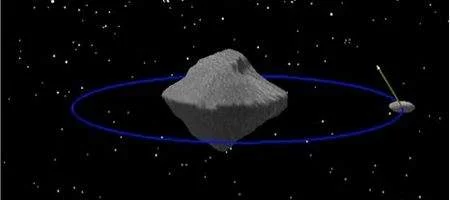ESA’s planning to crash a spacecraft into an asteroid called Didymos, to, well, see what happens.

Its Asteroid Impact and Deflection Assessment (AIDA) mission will intercept Didymos in 2022, when the asteroid gets within 11 million kilometers of Earth.
To make things more interesting, Didymos is a ‘binary’, consisting of two asteroids orbiting each other. One is roughly 800 meters across, the other about 150 meters. While one probe smashes into the smaller asteroid at around 6.25 kilometers per second, the other records what happens.
The energy released is similar to that of a large piece of space junk hitting a satellite, meaning that the mission could help model severe spacecraft damage by space debris. It also has implications for the future deflection of asteroids that might threaten Earth.
Didymos, though, poses no risk to our planet – although it will come close enough to be seen through half-meter telescopes on Earth before and after the strike.
ESA’s Asteroid Impact Monitor, or AIM, will survey Didymos in detail, before and after the collision. It will look at the impact dynamics as well as the resulting crater, allowing scientists to improve on ground-based observations and models.
Earlier this month, ESA issued a call for scientists to propose experiments that could be carried on the mission or performed on the ground. Ideas can be anything that deals with hypervelocity impacts, planetary science, planetary defence, human exploration or innovation in spacecraft operations.
“AIDA is not just an asteroid mission, it is also meant as a research platform open to all different mission users,” says Andrés Gálvez, ESA studies manager.






